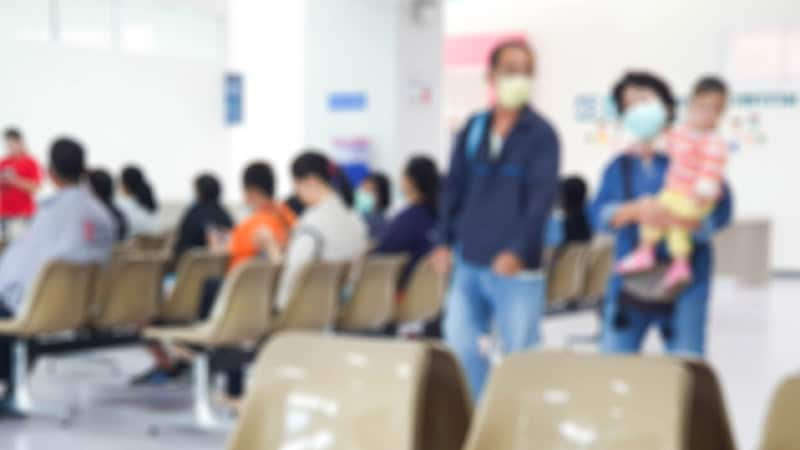First Nations Patients in Alberta More Likely to Leave Emergency Departments Before Completing Care Due to Racism and Discrimination
핵심 개념
First Nations patients in Alberta have significantly higher rates of leaving the emergency department before completing care compared to non-First Nations patients, often due to experiences of racism, discrimination, and lack of culturally safe care.
초록
This study examined the differences in emergency department (ED) visit outcomes between First Nations and non-First Nations patients in Alberta, Canada. The researchers conducted a mixed-methods study, including a retrospective cohort analysis of provincial health data and qualitative interviews with First Nations patients and healthcare providers.
The key findings include:
First Nations patients were nearly twice as likely to leave the ED without being seen or against medical advice compared to non-First Nations patients.
This disparity could not be explained by factors like diagnosis, acuity, geography, or patient demographics, and was observed across various disease categories.
First Nations patients were more likely to leave the ED in the daytime, for non-emergent conditions, and at larger healthcare facilities.
After leaving the ED prematurely, First Nations patients were more likely to return within 72 hours, and then leave again.
Qualitative interviews revealed that First Nations patients often leave due to experiences of stereotyping, discrimination, and racism from healthcare providers, as well as communication barriers and transportation challenges.
The researchers are working with First Nations organizations to develop interventions to address racism and improve equity in emergency care for this population. Future research should explore additional factors influencing First Nations patients' decisions to remain in care, including the potential benefits of Indigenous-led or culturally safe healthcare services.
First Nations Patients Often Leave ED Before Completing Care
통계
"Overall, First Nations patients were more likely to end visits by leaving without being seen or against medical advice (odds ratio, 1.96)."
"After leaving without being seen or against medical advice, 22.7% of First Nations patients had a return ED visit within 72 hours, compared with 19.9% of non–First Nations patients."
"A larger proportion of return visits among First Nations patients once again ended in leaving early (14.9%) compared with non–First Nations patients (8.8%)."
인용구
"Racism and stereotyping are a cause of First Nations patients leaving care, which members from Alberta's White majority do not face."
"Some of these [factors] include how First Nations patients are treated while waiting to be seen, such as minimizing and dismissing the urgency of presenting symptoms, feeling unsafe, and having inappropriate language directed at them while in the ED."
핵심 통찰 요약
by Carolyn Cris... 게시일 www.medscape.com 04-26-2024
https://www.medscape.com/viewarticle/first-nations-patients-often-leave-ed-before-completing-care-2024a100086z
더 깊은 질문
What specific interventions or strategies could be implemented to address racism and discrimination in emergency departments and improve the experiences of First Nations patients?
To address racism and discrimination in emergency departments and improve the experiences of First Nations patients, several interventions and strategies can be implemented. Firstly, healthcare providers and staff should undergo cultural competency training to increase awareness of Indigenous cultures, histories, and healthcare needs. This training can help reduce biases and stereotypes that may lead to discriminatory behavior towards First Nations patients. Additionally, implementing policies and protocols that explicitly prohibit racism and discrimination in healthcare settings is crucial. This can include establishing a zero-tolerance policy for discriminatory actions and language.
Creating a welcoming and culturally safe environment in emergency departments is essential. This can involve incorporating Indigenous design, languages, and architecture into the physical space to make it more inviting for First Nations patients. Providing Indigenous-led services and employing Indigenous healthcare providers can also enhance the cultural safety of care. Furthermore, improving communication with patients, addressing transportation barriers, and reducing wait times can help mitigate the factors that contribute to First Nations patients leaving care early.
How might the findings of this study apply to other marginalized or Indigenous populations in Canada or globally who face disparities in healthcare access and quality?
The findings of this study on First Nations patients in Alberta can be extrapolated to other marginalized or Indigenous populations in Canada and globally who face disparities in healthcare access and quality. Similar issues of racism, discrimination, and cultural insensitivity may exist in healthcare settings for these populations, leading to barriers in accessing and receiving appropriate care. The experiences of First Nations patients leaving emergency departments prematurely due to concerns about racism and anti-Indigenous sentiment may resonate with other marginalized groups who encounter similar challenges in healthcare settings.
By understanding and addressing the root causes of these disparities, healthcare systems can work towards providing more equitable and culturally competent care for all marginalized and Indigenous populations. Implementing interventions such as cultural competency training, creating culturally safe environments, and involving community members in healthcare decision-making can help improve healthcare experiences and outcomes for these populations.
What broader societal and systemic changes are needed to tackle the root causes of racism and discrimination that contribute to these healthcare inequities for First Nations people?
To tackle the root causes of racism and discrimination that contribute to healthcare inequities for First Nations people, broader societal and systemic changes are necessary. Firstly, addressing historical and ongoing colonial legacies that have marginalized Indigenous communities is crucial. This involves recognizing and rectifying the impacts of colonization, such as systemic racism, intergenerational trauma, and social determinants of health that disproportionately affect First Nations populations.
Implementing policies that support Indigenous self-determination and sovereignty in healthcare is essential. This includes involving Indigenous communities in decision-making processes, respecting Indigenous knowledge and practices, and ensuring that healthcare services are culturally safe and responsive to the needs of First Nations people. Additionally, increasing funding for Indigenous-led healthcare initiatives, improving access to primary care services in Indigenous communities, and addressing social determinants of health such as housing, education, and employment can help reduce healthcare inequities.
Overall, dismantling systemic racism and discrimination requires a comprehensive and collaborative effort from governments, healthcare institutions, communities, and individuals to create a more just and equitable healthcare system for First Nations people and all marginalized populations.
0
More on Healthcare
